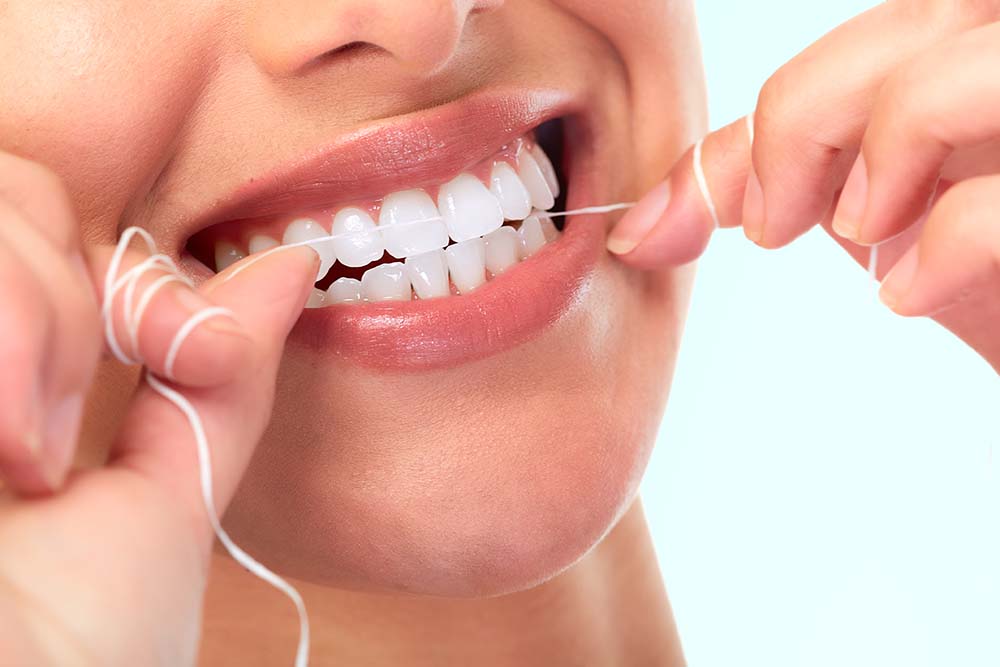Periodontitis, also called gum disease, is a serious gum infection that damages the soft tissue and, without treatment, can destroy the bone that supports your teeth. Ensure that your gums are healthy and disease-free by scheduling routine dental exams with our team!
CAUSE OF PERIODONTAL DISEASE
In most cases, the development of periodontitis starts with plaque — a sticky film composed mainly of bacteria. As the plaque persists and hardens into tartar, your gums become irritated. The first stage of periodontal disease is gingivitis and happens when your gums become inflamed. If this goes unchecked, it develops into periodontitis which can lead to tooth loss and other consequences. Periodontitis is common but largely preventable. It’s usually the result of poor oral hygiene. Brushing at least twice a day, flossing daily, and getting regular dental checkups can greatly improve your chances of successful treatment for periodontitis and can also reduce your chance of developing it.
GINGIVITIS SYMPTOMS
Healthy gums are firm and pale pink and fitted tightly around the teeth. Signs and symptoms of gingivitis include:
•Swollen or puffy gums
•Dusky red or dark red gums
•Gums that bleed easily when you brush or floss
•Bad breath
•Receding gums
•Tender gums
PERIODONTAL DISEASE SYMPTOMS
Periodontitis can be tough to spot. But as periodontal disease worsens, some of these symptoms may appear:
•Bad breath or a bad taste in the mouth
•Receding gums exposing tooth roots
•Sensitive teeth and gums
•Gums separating from the teeth, with pockets forming between teeth and gums
•Tooth pain
•Loose-feeling teeth
If you are noticing any of these symptoms, contact us right away to schedule an appointment. The sooner you seek care, the better your chances of reversing damage from periodontitis.
HOW IS PERIODONTAL DISEASE TREATED
Gum disease requires both immediate and longer-term care. Our team will evaluate your teeth and determine the best course of action. The goal of periodontitis treatment is to thoroughly clean the pockets around teeth and prevent damage to the surrounding bone. You have the best chance for successful treatment when you also adopt a daily routine of good oral care and manage health conditions that may impact dental health.
Nonsurgical treatments
If periodontitis isn’t advanced, treatment may involve less invasive procedures, including:
• Scaling. Scaling removes tartar and bacteria from your tooth surfaces and beneath your gums. It may be performed using instruments, a laser or an ultrasonic device.
• Root planing. Root planing smooths the root surfaces, discouraging further buildup of tartar and bacteria, and removes bacterial byproducts that contribute to inflammation and delay healing or reattachment of the gum to the tooth surfaces.
• Antibiotics. Topical or oral antibiotics can help control bacterial infection. Topical antibiotics can include antibiotic mouth rinses or insertion of gels containing antibiotics in the space between your teeth and gums or into pockets after deep cleaning. However, oral antibiotics may be necessary to completely eliminate infection-causing bacteria.
AFTER SCALING AND ROOT PLANING
Your gums will likely be tender and somewhat irritated for several days. Rinse your mouth with warm salt water 2-3 times a day to relieve pain and cleanse the treatment area. Brush and floss normally, taking care to brush gently so that the treated area doesn’t become more irritated. If you notice that the area is swelling, place a cold compress on your cheek and take over the counter painkillers. Do not eat especially hard or chewy foods for several days so that you don’t disrupt healing. If you are still experiencing discomfort after a few days, contact your dentist.
PERIODONTAL (GUM DISEASE) THERAPY
Periodontal disease is mainly the result of infection and inflammation of the gums and bone that surround and support the teeth. In its early stage this is called gingivitis and the gums can become swollen, red, and may bleed. In its more serious form, called periodontitis, the gums can pull away from the teeth, bone can be lost, and the teeth may loosen or even fall out. Periodontal disease is mostly seen in adults. Periodontal disease and tooth decay are the two biggest threats to dental health.
A recent CDC report provides the following data related to prevalence of periodontitis in the U.S.:
● 47.2% of adults aged 30 years and older have some form of periodontal disease.
● Periodontal disease increases with age, 70.1% of adults 65 years and older have periodontal disease.
This condition is more common in men than women (56.4% vs 38.4%), those living below the federal poverty level (65.4%), those with less than a high school education (66.9%), and current smokers (64.2%)
The good news is that there are treatments available through Periodontal Therapy. Depending on the level of disease, treatments might include deep cleaning of the tooth root surfaces below the gums, medications prescribed to take by mouth or placed directly under the gums, and sometimes corrective surgery.

